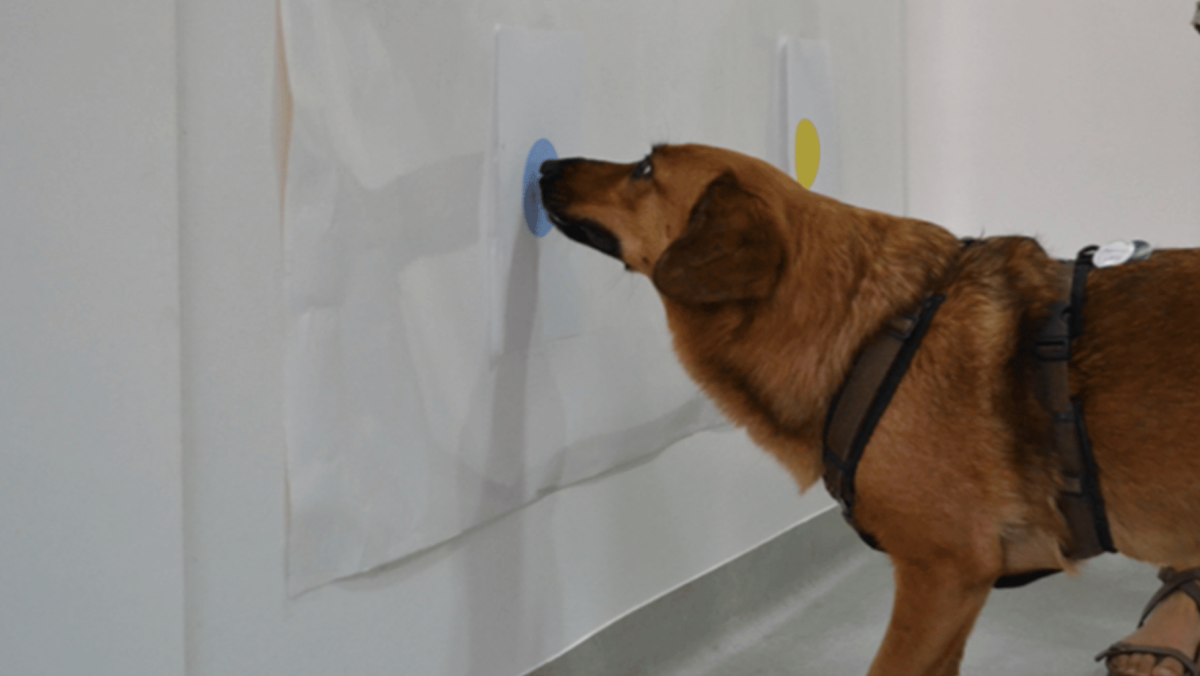ManyDogs 2: Overimitation
We are currently recruiting research sites to conduct the ManyDogs 2 project! If you want to participate, please contact us at manydogsproject2@gmail.com to begin the onboarding process. Or view our study manual to see what we’re doing.
Our ManyDogs 2 project will be on overimitation in dogs. Overimitation occurs when an individual imitates another’s action that is unnecessary to achieve a goal. For example, if you see someone wipe their brow before picking up a heavy object, wiping the brow isn’t necessary to pick up the object. So copying the brow wiping would be an example of overimitation. Human children do this a lot (Hoehl et al., 2019), and dogs overimitate in certain situations (Huber et al. 2020).
In ManyDogs 2, we plan to leverage the power of large sample sizes across many labs to study overimitation in dogs. Completing the project is a long process, so we have outlined our project milestones below, letting you know where we are in the process. Keep checking it to see how we’re coming along!
Project Milestones
Phase 1: Project Development
Completed
Create project teams
Develop a project-specific admin team, methods team, and data teams.
Create milestones
Work with MD Methods Development and Monitoring Committee to create reasonable project milestones and deadlines. Identify overall project goals and break down into sub-goals to be accomplished by each project team over specific time periods.
Set up infrastructure
Use tools (e.g., Google Drive, Gmail account, Slack channels, GitHub repos) to host project resources and maintain records that are easy to access and reference by all project members. Design processes and tools with the goal of promoting core principles of transparency and reproducibility. Establish communication expectations within the project teams and for updating the broader MD membership and possible collaborators external to MD (i.e., plan regular updates and project recruitment ads).
Solicit methods ideas
Hold town hall meeting with MD community to solicit ideas about input for methods and participation guidelines.
Generate methods
Work with MD Methods Development and Monitoring Committee to generate project methods. Create detailed documents of the experimental procedure, with supporting video demonstrations where appropriate.
Present methods
Present full draft of methods for feedback from MD community.
Pilot test
Pilot test methods with subjects from multiple labs. Determine clear abort criteria. Prioritize piloting in diverse labs that work with different populations to robustly test the experimental procedure.
Develop guidelines
Design project participation guidelines for researchers. Determine the authorship requirements and define project contribution areas. Outline participation periods of the project (i.e., lab enrollment window, data collection window).
Develop data system
Work with MD Data Management and Open Science Committee to figure out accessible, easy-to-use data entry system.
Develop methods materials
Create relevant methods materials for participating labs, such as methods guide, 'at-a-glance' aids, participant email templates, coding sheets, survey translations, etc.
Pre-register
Write pre-registration materials or registered report and send out for final approval from MD community.
Currently
Recruit labs
Work with MD Communications and Community Building team to advertise the project and recruit participating labs. Plan and implement an advertising strategy in the months leading up to data collection. Aim to recruit labs from diverse geographical regions, or that work with different populations of dogs. Design registration process for participating labs to join MD and sign necessary participation agreements or code of conduct agreements.
Phase 2: Data Collection
Support lab progress
Work with labs to set internal milestones for data collection. Monitor progress with regular check-ins. Provide remote support via email, video conferencing as necessary.
Close data collection
Within the MD2 teams and participating labs, announce the anticipated data collection end. Allow for additional time if necessary for some groups to wrap up final participants.
Phase 3: Data Processing & Publication
Analyse data
Following the preregistered analytical plan, analyse the data.
Create and share results summary
Write a brief (1 page or less) summary of the project and preliminary results to share with the MD2 contributors and broader MD community.
Organize the final report writing
Following the project's participation guidelines, organize the report writing process and establish reasonable timelines to complete a manuscript and supplmentary materials.
Confirm authorship and contributions
Collect all co-author information (e.g., with Tenzing) and confirm that co-authors have met the criteria for areas of contribution. Collect any additional non-author contributor information for acknowledgements section.
Obtain co-author manuscript approval
Circulate the final manuscript for co-author feedback and obtain submission approval.
Upload pre-print
Make the pre-review manuscript available on an accessible open-access repository (e.g., PsyArXiv)
Provide data access
Upload the anonymized data and analysis scripts to an accessible repository (e.g., GitHub, OSF).
Submit manuscript
Submit the manuscript to a peer-reviewed journal, preferably with open-access.
Project Team
Project Lead
Louise Mackie (Vetmeduni Vienna)
Project Coordinators
Julia Espinosa (Harvard University)
Karoline Gerwisch (Vetmeduni Vienna)
Anna Korzeniowska (eLife Scientific Publications)
Louise Mackie (Vetmeduni Vienna)
Courtney Sexton (Virginia Tech)
Jeffrey Stevens (University of Nebraska-Lincoln)
Methods Team
Karoline Gerwisch (Vetmeduni Vienna) Team Lead
Louise Mackie (Vetmeduni Vienna) Team Lead
Carly Fisher (Brown University)
Bryan Perez (CUNY, Hunter College)
Lauren Robinson (Mount Holyoke College)
Susana Ruiz Fernandez (University of Technology Cottbus-Senftenberg)
Carolyn Walsh (Memorial University of Newfoundland)
Registration and Onboarding Team
Julia Espinosa (Harvard University) Team Lead
Karoline Gerwisch (Vetmeduni Vienna)
Lupin Martins Lisboa Teles (Federal University of Alagoas, Brazil)
Susana Ruiz Fernandez (University of Technology Cottbus-Senftenberg)
Study Adverstisement and Communication Team
Courtney Sexton (Virginia Tech) Team Lead
Julia Espinosa (Harvard University)
Bryan Perez (CUNY, Hunter College)
Data Team
Jeffrey Stevens (University of Nebraska-Lincoln) Team Lead
Liz Hare (Dog Genetics LLC)
Marianne Freeman (Sparsholt College Hampshire)
Anna Korzeniowska (eLife Scientific Publications)
Lupin Martins Lisboa Teles (Federal University of Alagoas, Brazil)
Lauren Robinson (Mount Holyoke College)
